IMF's epic plan to conjure away debt and dethrone bankers
(IMFの史上最大の作戦…債務消滅、バンカー一掃)
By Ambrose Evans-Pritchard
Telegraph: 2:31PM BST 21 Oct 2012
IMFはメガロマニアック役人の集団ってことでFAですか?
バンカー、バンカー、何もかも信用創造なんて詐欺が悪い、銀行マンが悪い、投資銀行の強欲が悪い、お前等のせいだ、責任取れ、我々のような無実の市民を苦しめているのはお前等だ。
↓
お灸をすえろ
ふふふふふ。
一度すえてみて下さい(笑)。
今の日本人くらいに楽しい思いが出来そうですね。




(IMFの史上最大の作戦…債務消滅、バンカー一掃)
By Ambrose Evans-Pritchard
Telegraph: 2:31PM BST 21 Oct 2012
So there is a magic wand after all. A revolutionary paper by the International Monetary Fund claims that one could eliminate the net public debt of the US at a stroke, and by implication do the same for Britain, Germany, Italy, or Japan.
というわけで、魔法の杖はやっぱり在りました。IMFがまとめた革命的文書によれば、米国の公的債務を一気呵成に消滅させられる上に、どうやら英国、ドイツ、イタリア、または日本にも同じことが可能なようです。
One could slash private debt by 100pc of GDP, boost growth, stabilize prices, and dethrone bankers all at the same time. It could be done cleanly and painlessly, by legislative command, far more quickly than anybody imagined.
民間部門の債務をGDP比100%削減、成長促進、物価安定、バンカー一掃。
これを同時に行うことが可能かもしれません。
議会の命令によって、誰も想像しなかったほど迅速にこれをサクッと無痛で出来るかもしれないのです。
The conjuring trick is to replace our system of private bank-created money -- roughly 97pc of the money supply -- with state-created money. We return to the historical norm, before Charles II placed control of the money supply in private hands with the English Free Coinage Act of 1666.
この消滅マジックは、システム内の民間銀行の生み出す資金(約97%)を政府の生み出す資金と入れ替えるというものです。
僕らは昔からの、チャールズ2世が1666年の自由鋳貨法制定を以ってマネーサプライのコントロールを民間に任せる前の、規範に立ち戻るのです。
Specifically, it means an assault on "fractional reserve banking". If lenders are forced to put up 100pc reserve backing for deposits, they lose the exorbitant privilege of creating money out of thin air.
具体的に言えば、「部分準備銀行制度」を攻撃するわけです。
銀行の預金準備率が100%になってしまえば、銀行は何もないところから金を生み出すという、とんでもない特権を失うわけです。
The nation regains sovereign control over the money supply. There are no more banks runs, and fewer boom-bust credit cycles. Accounting legerdemain will do the rest. That at least is the argument.
国家はマネーサプライのコントロールを取り戻します。
取り付け騒ぎはなくなりますし、信用サイクルだって減るわけです。
後は会計上のからくりがなんとかしてくれるでしょう。
少なくとも理論的にはそういうことです。
Some readers may already have seen the IMF study, by Jaromir Benes and Michael Kumhof, which came out in August and has begun to acquire a cult following around the world.
一部の読者は既に、Jaromir Benes氏とMichael Kumhof氏がまとめたIMFの調査報告を読まれたかもしれません。
これは8月に発表され、世界中でカルト的支持を獲得し始めました。
Entitled "The Chicago Plan Revisited", it revives the scheme first put forward by professors Henry Simons and Irving Fisher in 1936 during the ferment of creative thinking in the late Depression.
『シカゴ計画再訪』と題された報告書は、大恐慌終盤のクリエイティブ・シンキングの熟成中、1936年にヘンリー・シモンズ教授とアーヴィン・フィッシャー教授が最初に提示した計画を復活させるものです。
Irving Fisher thought credit cycles led to an unhealthy concentration of wealth. He saw it with his own eyes in the early 1930s as creditors foreclosed on destitute farmers, seizing their land or buying it for a pittance at the bottom of the cycle.
信用サイクルが不健全な資産の集中をもたらしている、とフィッシャー教授は考えました。
1930年代初頭に、債権者が無一文の農民から土地を差し押さえたり、景気の底でこれを二束三文で買い叩いたりするのを、教授は自らの目で目撃していました。
The farmers found a way of defending themselves in the end. They muscled together at "one dollar auctions", buying each other's property back for almost nothing. Any carpet-bagger who tried to bid higher was beaten to a pulp.
農民は最終的には自衛方法を見出しました。
彼らは「1ドル入札」で団結して、お互いの財産をただ同然の価格で買い戻しました。
僅かでも高い値を付けようとしたカーペットバッガーは、袋叩きにされました。
Benes and Kumhof argue that credit-cycle trauma - caused by private money creation - dates deep into history and lies at the root of debt jubilees in the ancient religions of Mesopotian and the Middle East.
(民間の信用創造によって生み出される)信用サイクルのトラウマはかなり昔まで遡ることが可能で、メソポタミア文明や中東の古代宗教の借金祭がルーツだ、とBenes氏とKumhof氏は論じています。
Harvest cycles led to systemic defaults thousands of years ago, with forfeiture of collateral, and concentration of wealth in the hands of lenders. These episodes were not just caused by weather, as long thought. They were amplified by the effects of credit.
数千年前、収穫サイクルは担保の没収を伴うシステミック・デフォルトをもたらし、貸手に資産を集中させました。
このようなエピソードは、昔から考えられてきたように、天気によって生じただけではありません。
信用の影響によって増幅されました。
The Athenian leader Solon implemented the first known Chicago Plan/New Deal in 599 BC to relieve farmers in hock to oligarchs enjoying private coinage. He cancelled debts, restituted lands seized by creditors, set floor-prices for commodities (much like Franklin Roosevelt), and consciously flooded the money supply with state-issued "debt-free" coinage.
アテネの指導者、ソロンは紀元前599年に、民間の信用創造で儲けるオリガルヒに借金がある農民を支援すべく、史上初のシカゴ・プラン/ニューディール計画を行いました。
ソロンは借金を免除し、債権者に差し押さえられた土地を返還し、商品の最低価格を設定し(フランクリン・ルーズベルト大統領と殆ど同じです)、政府が発行する「負債なき」鋳造貨幣でマネーサプライを意図的に増やしました。
The Romans sent a delegation to study Solon's reforms 150 years later and copied the ideas, setting up their own fiat money system under Lex Aternia in 454 BC.
150年後、ローマ人はソロンの改革を研究すべく派遣団を送り込み、彼のアイデアを真似し、紀元前454年、永久法の下に独自の名目貨幣システムを立ち上げました。
It is a myth - innocently propagated by the great Adam Smith - that money developed as a commodity-based or gold-linked means of exchange. Gold was always highly valued, but that is another story. Metal-lovers often conflate the two issues.
貨幣は商品を基準とした、または金とリンクした交換手段として発達した、というのは、偉大なるアダム・スミスが無邪気に宣伝した神話です。
金は常に高い価値がありましたが、それはまた別の話です。
金属大好きの皆様はこの二つをごっちゃにすることが多いですね。
Anthropological studies show that social fiat currencies began with the dawn of time. The Spartans banned gold coins, replacing them with iron disks of little intrinsic value. The early Romans used bronze tablets. Their worth was entirely determined by law - a doctrine made explicit by Aristotle in his Ethics - like the dollar, the euro, or sterling today.
人類学的な研究は、社会的名目貨幣システムは太古の昔に始まったものだと示しています。
スパルタ人は金貨を禁止して、本質的価値を殆ど持たない鉄に替えました。
初期のローマ人は銅の硬貨を使っていました。
その価値は、今日の米ドルや、ユーロや、英ポンドのように、完全に法律で決められていました(アリストテレスが倫理学で明確にしているドクトリンです)。
Some argue that Rome began to lose its solidarity spirit when it allowed an oligarchy to develop a private silver-based coinage during the Punic Wars. Money slipped control of the Senate. You could call it Rome's shadow banking system. Evidence suggests that it became a machine for elite wealth accumulation.
ポエニ戦争時にオリガルヒが民間で銀貨を鋳造するのを認めた時に、ローマは団結心を失い始めたと言う人がいます。
元老院は貨幣のコントロールを失いました。
これをローマの影の銀行システムと呼んでも良いでしょう。
エリートが資産を蓄積する仕組みになったと証拠は示しています。
Unchallenged sovereign or Papal control over currencies persisted through the Middle Ages until England broke the mould in 1666. Benes and Kumhof say this was the start of the boom-bust era.
通貨に対する揺ぎ無い主権または法王のコントロールは、中世を通じて、1666年にイングランドがその骨格を壊すまで続きました。
Benes氏とKumhof氏は、これが景気が波を持つ時代の始まりだったとしています。
One might equally say that this opened the way to England's agricultural revolution in the early 18th Century, the industrial revolution soon after, and the greatest economic and technological leap ever seen. But let us not quibble.
同様に、イングランドの18世紀初頭の農業革命、その直後の産業革命、そしてそれ以降の偉大な経済的、技術的躍進の道を切り開いたと言うことも出来るかもしれません。
とはいえ、重箱の隅を突くのはよしましょう。
The original authors of the Chicago Plan were responding to the Great Depression. They believed it was possible to prevent the social havoc caused by wild swings from boom to bust, and to do so without crimping economic dynamism.
シカゴ・プランのそもそもの立案者等は、大恐慌に応じてこれをまとめました。
激しい景気の波によって生じた社会的混乱を阻止することは可能だ、また、経済的ダイナミズムを損なうことなくそうすることが出来る、と彼らは考えていたのです。
The benign side-effect of their proposals would be a switch from national debt to national surplus, as if by magic. "Because under the Chicago Plan banks have to borrow reserves from the treasury to fully back liabilities, the government acquires a very large asset vis-à-vis banks. Our analysis finds that the government is left with a much lower, in fact negative, net debt burden."
彼らの提案の良性の副作用は、まるで魔法のように、財政赤字を黒字に変えることでしょう。
「シカゴ・プランの下では、銀行は負債と同額の準備金を財務省から借りなければならないので、政府は非常に大きな資産、つまり銀行を手に入れることになる。我々の分析によって、政府の債務負担は極めて少なくなる、実はマイナスになる、ということが明らかになった」
The IMF paper says total liabilities of the US financial system - including shadow banking - are about 200pc of GDP. The new reserve rule would create a windfall. This would be used for a "potentially a very large, buy-back of private debt", perhaps 100pc of GDP.
IMFの論文によれば、米国の金融システム(シャドー・バンキングを含む)の負債総額はGDPの約200%だそうです。
新しい準備制度は、思いがけない収入を生み出すでしょう。
これは、恐らくGDPの100%相当の「大規模な民間債務の買戻し」に使えるかもしれません。
While Washington would issue much more fiat money, this would not be redeemable. It would be an equity of the commonwealth, not debt.
米国政府はもっと沢山の名目貨幣を発行するかもしれませんが、これは償還可能ではないかもしれません。
債務ではなく、連邦の資産になるかもしれません。
The key of the Chicago Plan was to separate the "monetary and credit functions" of the banking system. "The quantity of money and the quantity of credit would become completely independent of each other."
シカゴ・プランの肝は、銀行システムの「金融と信用の機能」を分離することでした。
「マネーの量と信用の量はそれぞれ完全に独立する」のです。
Private lenders would no longer be able to create new deposits "ex nihilo". New bank credit would have to be financed by retained earnings.
民間の金融機関はもはや「ゼロから」預金を生み出すことは出来なくなります。
銀行は新規貸し出しを利益剰余金でファイナンスしなければならなくなるのです。
"The control of credit growth would become much more straightforward because banks would no longer be able, as they are today, to generate their own funding, deposits, in the act of lending, an extraordinary privilege that is not enjoyed by any other type of business," says the IMF paper.
「信用創造のコントロールは遥かに簡素化されるだろう。銀行はもはや今のように貸し出しをすることで資金や預金を生み出すことが出来なくなる、つまり、他のどのタイプのビジネスにも許されていない驚くべき特権を失うからだ」とIMFの論文には記されています。
"Rather, banks would become what many erroneously believe them to be today, pure intermediaries that depend on obtaining outside funding before being able to lend."
「それよりも銀行は、多くの人々が今現在、勘違いしているような、貸し出しを行う前に外部から得た資金に頼る、純粋な仲介業者になるだろう」
The US Federal Reserve would take real control over the money supply for the first time, making it easier to manage inflation. It was precisely for this reason that Milton Friedman called for 100pc reserve backing in 1967. Even the great free marketeer implicitly favoured a clamp-down on private money.
FRBは初めてマネーサプライの現実のコントロールを得て、インフレ管理は容易になるでしょう。
正にこの理由から、ミルトン・フリードマンが1967年に預金準備率を100%にすることを呼びかけたのです。
The switch would engender a 10pc boost to long-arm economic output. "None of these benefits come at the expense of diminishing the core useful functions of a private financial system."
この切り替えが行われれば、長期的に経済生産は10%増大されるでしょう。
「これらの恩恵のいずれも、民間金融システムの中心にある有益な機能を一切犠牲にしていない」のです。
Simons and Fisher were flying blind in the 1930s. They lacked the modern instruments needed to crunch the numbers, so the IMF team has now done it for them -- using the `DSGE' stochastic model now de rigueur in high economics, loved and hated in equal measure.
シモンズ教授とフィッシャー教授は1930年代を当てずっぽうに送りました。
彼らには計算に必要な現代的なツールがなかったので、IMFが今、「DSGE」確率解析モデルという、賛否が全く二分されるハイ・エコノミクスの絶対条件ですを用いて、これを行いました。
The finding is startling. Simons and Fisher understated their claims. It is perhaps possible to confront the banking plutocracy head without endangering the economy.
その結果は驚くべきものでした。
シモンズ教授とフィッシャー教授は自分達の主張を謙遜していました。
経済を危険にさらすことなく、銀行帝国に立ち向かうことが出来たかもしれません。
Benes and Kumhof make large claims. They leave me baffled, to be honest. Readers who want the technical details can make their own judgement by studying the text here.
Benes氏とKumhof氏は、大変な主張をしています。
僕は、正直なところ、当惑しています。
テクニカルな詳細情報をお望みの読者は、このリンク先にある文章を研究して、各々判断することが出来るでしょう。
The IMF duo have supporters. Professor Richard Werner from Southampton University - who coined the term quantitative easing (QE) in the 1990s -- testified to Britain's Vickers Commission that a switch to state-money would have major welfare gains. He was backed by the campaign group Positive Money and the New Economics Foundation.
IMFの二人組には支持者がいます。
1990年代にQEという新語を作った、サウサンプトン大学のリチャード・ワーナー教授は、国家貨幣への切り替えは大きな恩恵をもたらすだろう、とビッカーズ英銀行独立委員会で証言しました。
同教授は、ポジティブ・マネーとニュー・エコノミクス・ファンデーションといった団体に支持されています。
The theory also has strong critics. Tim Congdon from International Monetary Research says banks are in a sense already being forced to increase reserves by EU rules, Basel III rules, and gold-plated variants in the UK. The effect has been to choke lending to the private sector.
とはいえ、この理論は厳しい批判も招いています。
銀行は或る意味既にEU規則、バーゼルIII、また、英国では金メッキを施したその類似規則によって、準備比率の引き上げを強いられている、とIMRのティム・コンドン氏は言います。
その影響で、民間部門への貸し出しが細っているのです。
He argues that is the chief reason why the world economy remains stuck in near-slump, and why central banks are having to cushion the shock with QE.
コンドン氏は、それこそが世界経済が不況から抜け出せないでいる主な理由、そして中銀がQEでショックを緩和しなければならない主な理由だと論じています。
"If you enacted this plan, it would devastate bank profits and cause a massive deflationary disaster. There would have to do `QE squared' to offset it," he said.
「このプランを実施すれば、銀行の利益を吹っ飛ばして猛烈なデフレの大惨事をもたらすだろう。それをオフセットするには『QE二乗』をやらなければならなくなる」そうです。
The result would be a huge shift in bank balance sheets from private lending to government securities. This happened during World War Two, but that was the anomalous cost of defeating Fascism.
その結果、民間への貸し出しから政府証券への銀行のバランスシートの大きなシフトが起こるでしょう。
これは第二次世界大戦に起こったことですが、あれはファシズム打倒の異例のコストでした。
To do this on a permanent basis in peace-time would be to change in the nature of western capitalism. "People wouldn't be able to get money from banks. There would be huge damage to the efficiency of the economy," he said.
平時に恒久的にこれを実施することは、西側の資本主義の本質を変えることになります。
「誰も銀行から金を借りられなくなるだろう。経済効率にとってとてつもないダメージになる」とコンドン氏は言います。
Arguably, it would smother freedom and enthrone a Leviathan state. It might be even more irksome in the long run than rule by bankers.
ほぼ間違いなく、自由は消滅し、リバイアサン国家が生まれることでしょう。
長期的には、バンカーに支配されるよりも遥かに嫌なことになるかもしれません。
Personally, I am a long way from reaching an conclusion in this extraordinary debate. Let it run, and let us all fight until we flush out the arguments.
個人的には、僕がこの異例の議論の結論に至るには随分かかりそうです。
やってみて、議論が出尽くすまで闘えば良いんですよ。
One thing is sure. The City of London will have great trouble earning its keep if any variant of the Chicago Plan ever gains wide support.
一つ確実なことがあります。
シカゴ・プランのようなものが広く支持を獲得したら、シティ・オブ・ロンドンが稼ぐのは物凄く大変になるでしょう。
IMFはメガロマニアック役人の集団ってことでFAですか?
バンカー、バンカー、何もかも信用創造なんて詐欺が悪い、銀行マンが悪い、投資銀行の強欲が悪い、お前等のせいだ、責任取れ、我々のような無実の市民を苦しめているのはお前等だ。
↓
お灸をすえろ
ふふふふふ。
一度すえてみて下さい(笑)。
今の日本人くらいに楽しい思いが出来そうですね。












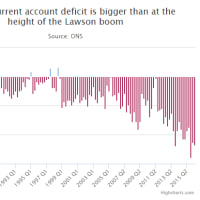
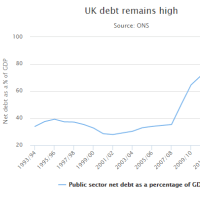

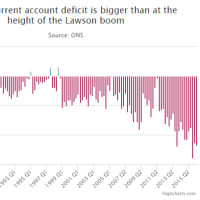
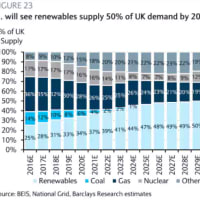
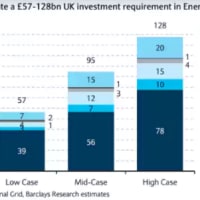
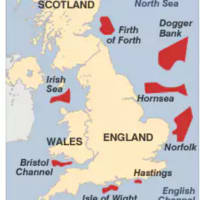
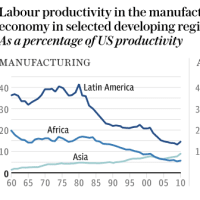


1930年代に、クリフォ-ド・ヒュー・ダグラスという人が、Social Credit (社会信用論、または社会信用説) という経済理論を提唱していました。
この経済論考の中に、不足する分の購買力を、公共通貨 (政府通貨) を発行して国民配当として国民に配当り、生産と消費を均衡させる必要がある、というものがありました。
このダグラスの社会信用論の核を成すものの一つに、『A+B定理』 と呼ばれるものがあります。
ただ、この 『A+B定理』 には、当時から批判もありました。
こちらに、Victor Bridger という人の書いた 『A+B定理』 の解説と、ダグラスと経済学者のホートリーとのディベート、そしてダグラスとケインズの議論の記録があります。
もし、よろしければ、翻訳紹介 (または翻訳要約紹介) していただけると、大変ありがたく思います。
◆ The A+B Theorem by Victor Bridger
http://www.alor.org/Political%20Democracy/The%20A+B%20Theorem.htm
◆ Douglas - Hawtrey Debate
http://social-credit.blogspot.jp/2009/09/douglas-hawtrey-debate.html
◆ ダグラスとケインズの議論
http://www.cooperativeindividualism.org/douglas-c-h_an-exchange-with-john-maynard-keynes-on-the-nature-of-credit-1930.html
(* ダグラスの社会信用論は、銀行の部分準備制度を問題にしていることもあり、最近でも時々引用されているようです。)